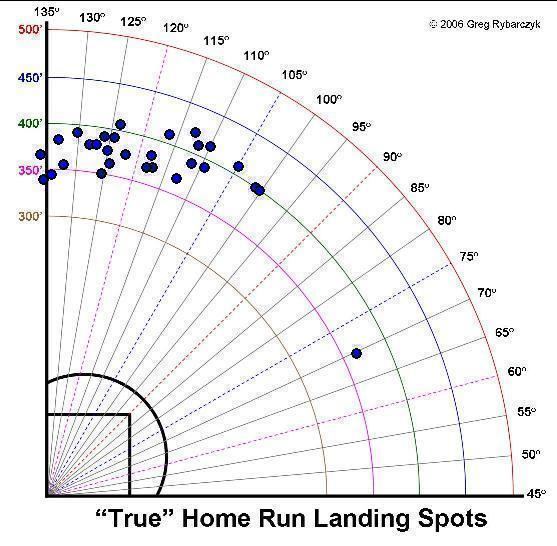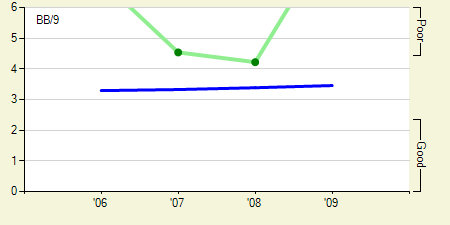I knew Aaron Hill was having a remarkable season, but it still caught me off guard when the game I was watching displayed the American League home run leaderboard.
Carlos Pena, 37
Russ Branyan, 31
Mark Teixeira, 31
Aaron Hill, 30
Justin Morneau, 29
This is like the old third grade test – “which of these is not like the others?” You have four traditional power hitting first baseman, known for their ability to drive the ball with regularity. And then there’s Hill – a 5’11 second baseman who had 28 career home runs before the season began.
Hill has always been a good player, mainly because of his range on the infield and his ability to hold his own at the plate. He’s made his mark as a good contact, gap power guy, but there were some questions about his true offensive abilities after a miserable 2008 season that saw him .263/.324/.361 in just 55 games.
He’s put last year behind him and then some, keeping pace with the premier sluggers in the game despite no drastic changes in his skillset. His contact rate is about the same as always, though he has increased his swing rates slightly, becoming more aggressive as he gains MLB experience, especially in terms of chasing pitches out of the zone. His O-Swing% is a career high 28%, for instance.
Beyond that, his batted ball profile is still neutral, which suggests his swing plane isn’t much different than it has been in the past. However, balls that used to land on in the gap are now flying over the wall – his HR/FB rate is 16.7%, when his career average coming into the season was about 5%. For a pitcher, this would be a sign that he’s been the victim of extremely bad luck, but hitters have far more control over their HR/FB rate than pitchers do. That doesn’t mean that Hill hasn’t been the beneficiary of good fortune, but we can’t just chalk up HR/FB rate to random variation.
To better look at his home runs, we turn to HitTracker.

The first thing we notice is that he’s an extreme pull power guy, with nearly all of his home runs flying out to left field. The next thing you notice, if you scroll down to his individual HR listing, is how many are labeled “JE”, which stands for “just enough”. Hill is tied with Joe Mauer and Kevin Youkilis for the league lead in home runs that were barely home runs, as 11 of his long balls have been categorized as cutting it close.
In fact, looking at the list of average home run length on Hit Tracker’s site, Hill’s 384.6 foot average distance is one of the lowest in the league. The guys whose home runs average 380-390 feet are mostly middle infielders (and Johnny Damon). On this list, he’s no longer anywhere near guys like Pena or Branyan.
We can also see that the extra home runs are coming from balls that used to be doubles just by looking at his total rate of extra base hits. In his healthy 2007 season, 37% of Hill’s hits were of the extra base variety. This year, 36% of his hits have gone for extra bases. There’s no change in how often he’s whacking the ball – just what category of XBH those balls are being classified as. Due to whatever reason, Hill has been able to clear the fence (barely, in some cases) with more regularity this year, but it doesn’t look like he’s actually added much in the way of power.
Aaron Hill is a good player, but he’s not a 30 HR guy. Odds are he never does this again.

